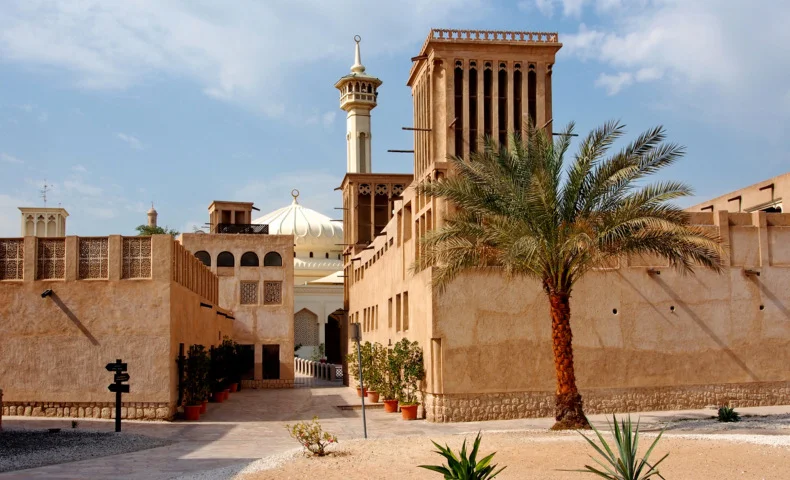Dubai is often associated with towering skyscrapers, luxurious malls, and futuristic architecture. However, beyond the glitz and glamour lies the heart of the city—the historic district of Old dubai tour. A tour of Old Dubai offers a glimpse into the city’s rich heritage, vibrant souks, and cultural landmarks that define its past. In this detailed guide, we take you on an unforgettable journey through Old Dubai, uncovering its hidden gems, traditional markets, and historical sites.
The Significance of Old Dubai
Old Dubai is where the city’s journey began. Before the discovery of oil, Dubai was a modest fishing and trading settlement. The city flourished due to its strategic location along trade routes connecting the East and the West. The Dubai Creek, a natural saltwater inlet, played a crucial role in its development as a key trading hub. Today, Old Dubai preserves the essence of its historical roots, offering visitors an authentic experience of the city’s past.
Exploring the Al Fahidi Historic District
One of the most iconic areas in Old Dubai is the Al Fahidi Historic District, also known as Al Bastakiya. This neighborhood dates back to the late 19th century and is a must-visit for history enthusiasts.
Key Highlights of Al Fahidi Historic District:
- Traditional Wind-Tower Architecture: The district is known for its well-preserved buildings featuring wind towers (Barjeel), an ancient form of natural air conditioning.
- Dubai Museum: Housed in Al Fahidi Fort, this museum showcases Dubai’s transformation from a humble fishing village to a global metropolis.
- Cultural Spaces and Art Galleries: The area is home to several art galleries and cultural centers, such as the Sheikh Mohammed Centre for Cultural Understanding (SMCCU).
- Quaint Courtyards and Cafés: Enjoy a cup of traditional Arabic coffee at one of the charming cafés nestled within the historic alleys.
A Traditional Abra Ride Across Dubai Creek
No visit to Walking tours in dubai is complete without a ride on a traditional abra, a wooden boat that ferries passengers across Dubai Creek. This short yet scenic journey offers stunning views of the contrast between Old Dubai’s heritage buildings and the modern skyline in the distance. The abra ride is not only a means of transport but also an opportunity to experience Dubai’s maritime legacy firsthand.
Discovering the Vibrant Souks of Old Dubai
Old Dubai is famous for its traditional souks (markets), which have been thriving for centuries. These bustling markets offer an authentic shopping experience and an opportunity to witness Dubai’s trading heritage.
Gold Souk
Located in Deira, the Gold Souk is a dazzling marketplace filled with intricate gold jewelry, precious gemstones, and unique designs. It is one of the largest gold markets in the world and a testament to Dubai’s reputation as the “City of Gold.”
Spice Souk
Adjacent to the Gold Souk is the aromatic Spice Souk, where traders sell an array of exotic spices, dried herbs, saffron, and fragrant incense. The vibrant colors and rich scents make this market a sensory delight.
Textile Souk
Located across the Creek in Bur Dubai, the Textile Souk is a paradise for fabric lovers. You’ll find a variety of silk, cotton, and embroidered fabrics, along with traditional abayas and kanduras.
Heritage and Cultural Experiences in Old Dubai
Old Dubai is not just about markets and historical sites; it is also a hub for cultural experiences that offer deeper insight into Emirati traditions and lifestyle.
Sheikh Mohammed Centre for Cultural Understanding (SMCCU)
For those looking to understand Emirati culture, the SMCCU offers engaging programs, including cultural meals, heritage tours, and interactive Q&A sessions where no topic is off-limits. Their motto, “Open Doors, Open Minds,” reflects their mission to bridge cultural gaps.
Al Seef District – Where Tradition Meets Modernity
The Al Seef District, located along Dubai Creek, is a modern interpretation of Old Dubai. Blending traditional architecture with contemporary elements, this area features boutique hotels, waterfront dining, and artisanal shops. Al Seef provides a nostalgic journey while offering modern comforts.
Visiting the Grand Al Fahidi Fort & Dubai Museum
The Al Fahidi Fort, built in 1787, is the oldest existing building in Dubai. It houses the Dubai Museum, where visitors can explore exhibits that showcase Dubai’s transformation over the decades. The museum features lifelike dioramas, archaeological findings, and interactive displays that transport visitors back in time.
Culinary Delights: Savoring Traditional Emirati Cuisine
A visit to Old Dubai is incomplete without indulging in authentic Emirati cuisine. There are several traditional eateries that serve local delicacies, including:
- Al Harees: A slow-cooked dish made with wheat and meat, commonly enjoyed during Ramadan.
- Al Majboos: A flavorful rice dish cooked with meat, vegetables, and aromatic spices.
- Luqaimat: Sweet dumplings drizzled with date syrup, a popular Emirati dessert.
- Karak Chai: A strong and flavorful tea infused with spices like cardamom and cinnamon.
Best Time to Visit Old Dubai
The ideal time to explore Old Dubai is during the cooler months from November to March. The pleasant weather makes walking tours, outdoor markets, and cultural experiences more enjoyable.
How to Get to Old Dubai
Old Dubai is easily accessible via public transport, taxis, and even by foot if staying nearby. The Al Fahidi Metro Station (Green Line) provides easy access to the historic district, while the Deira Old Souk Abra Station connects visitors to both sides of the Creek.
Final Thoughts: Why You Should Visit Old Dubai
A journey through Old Dubai is a step back in time to an era when the city thrived on trade, culture, and community. It is a stark contrast to the modern skyline but offers an equally mesmerizing experience. Whether you’re admiring the architectural beauty of Al Fahidi, bargaining in the bustling souks, or enjoying a traditional meal, Old Dubai provides an authentic and enriching experience that should not be missed.
